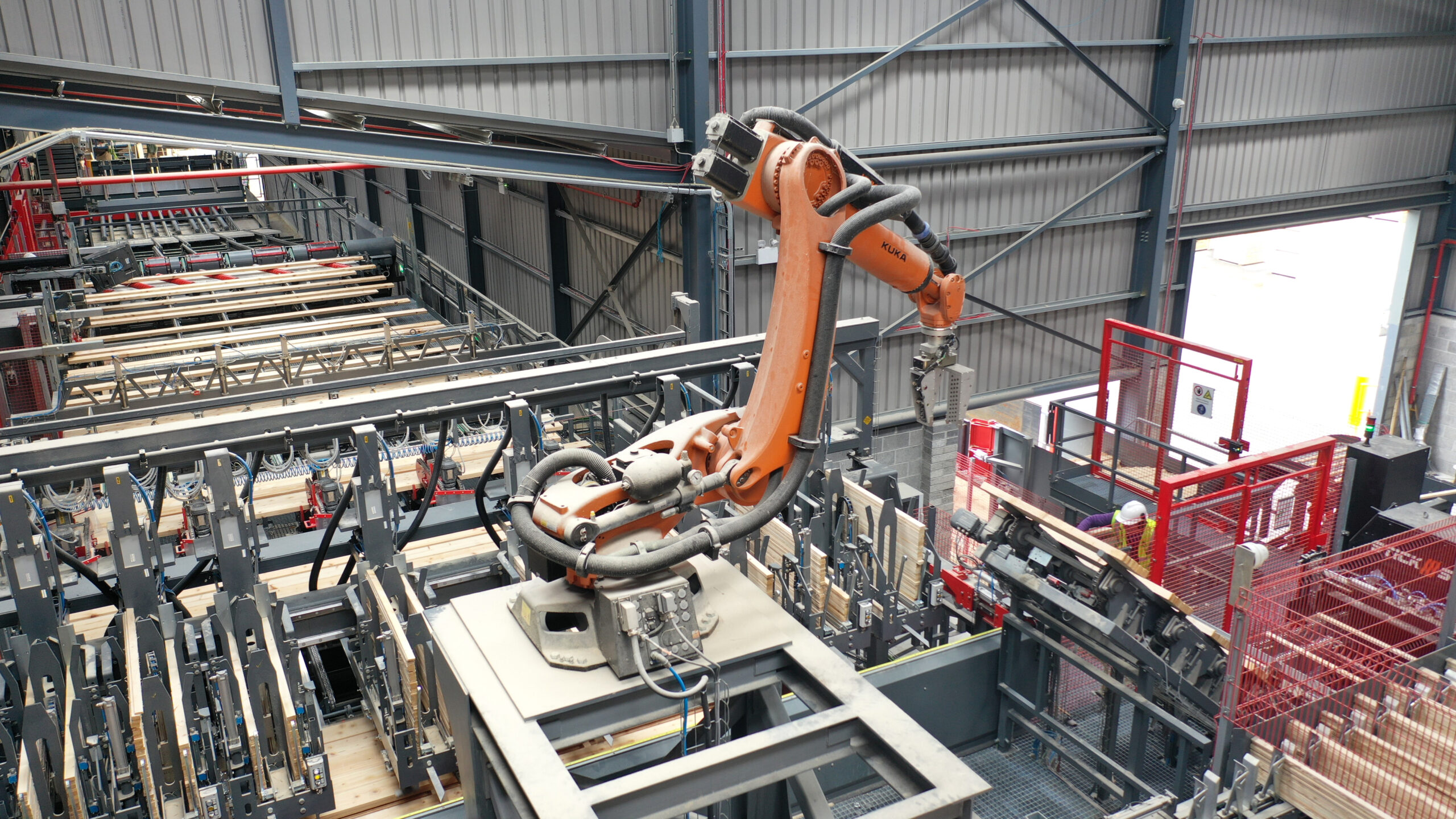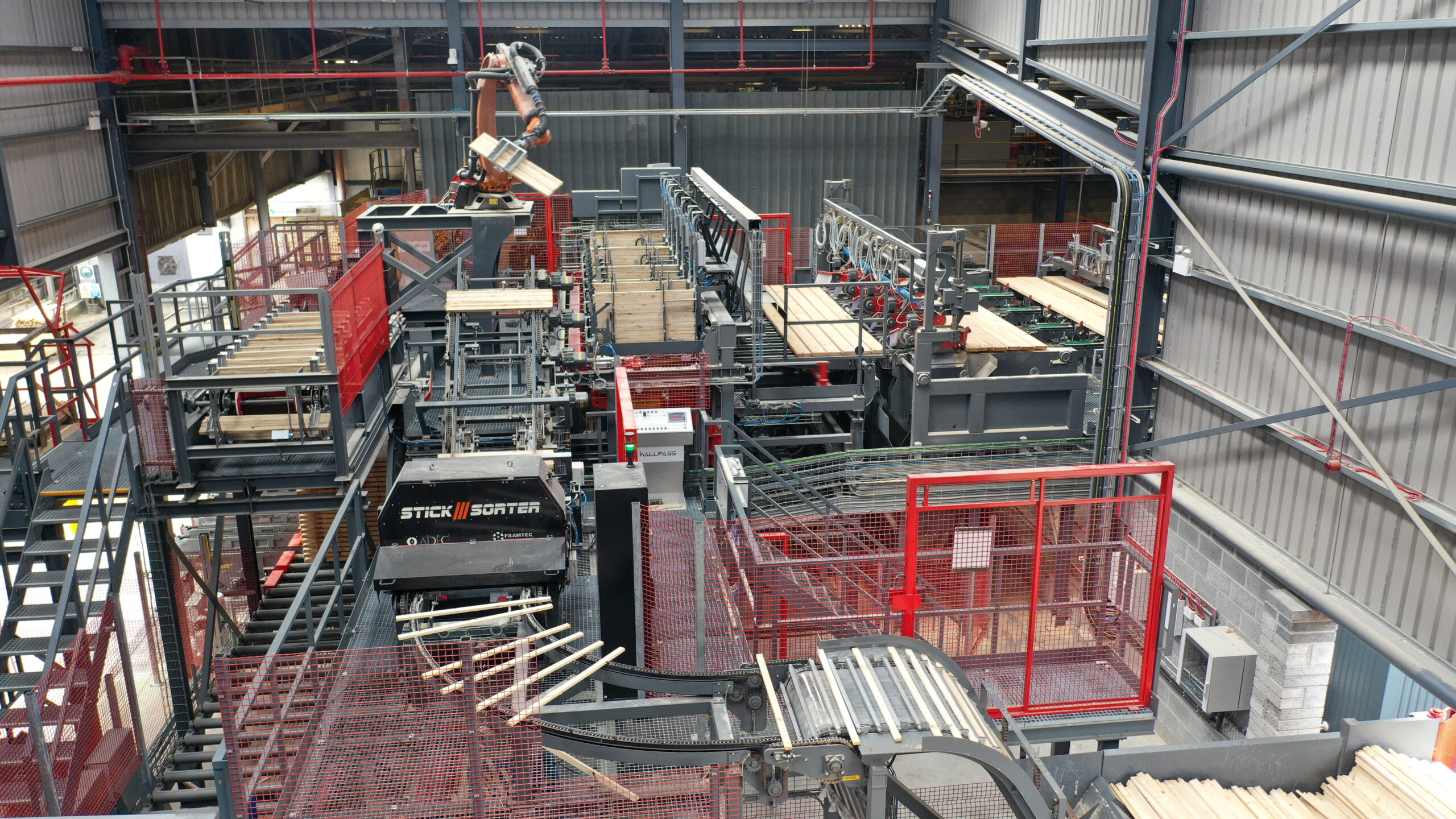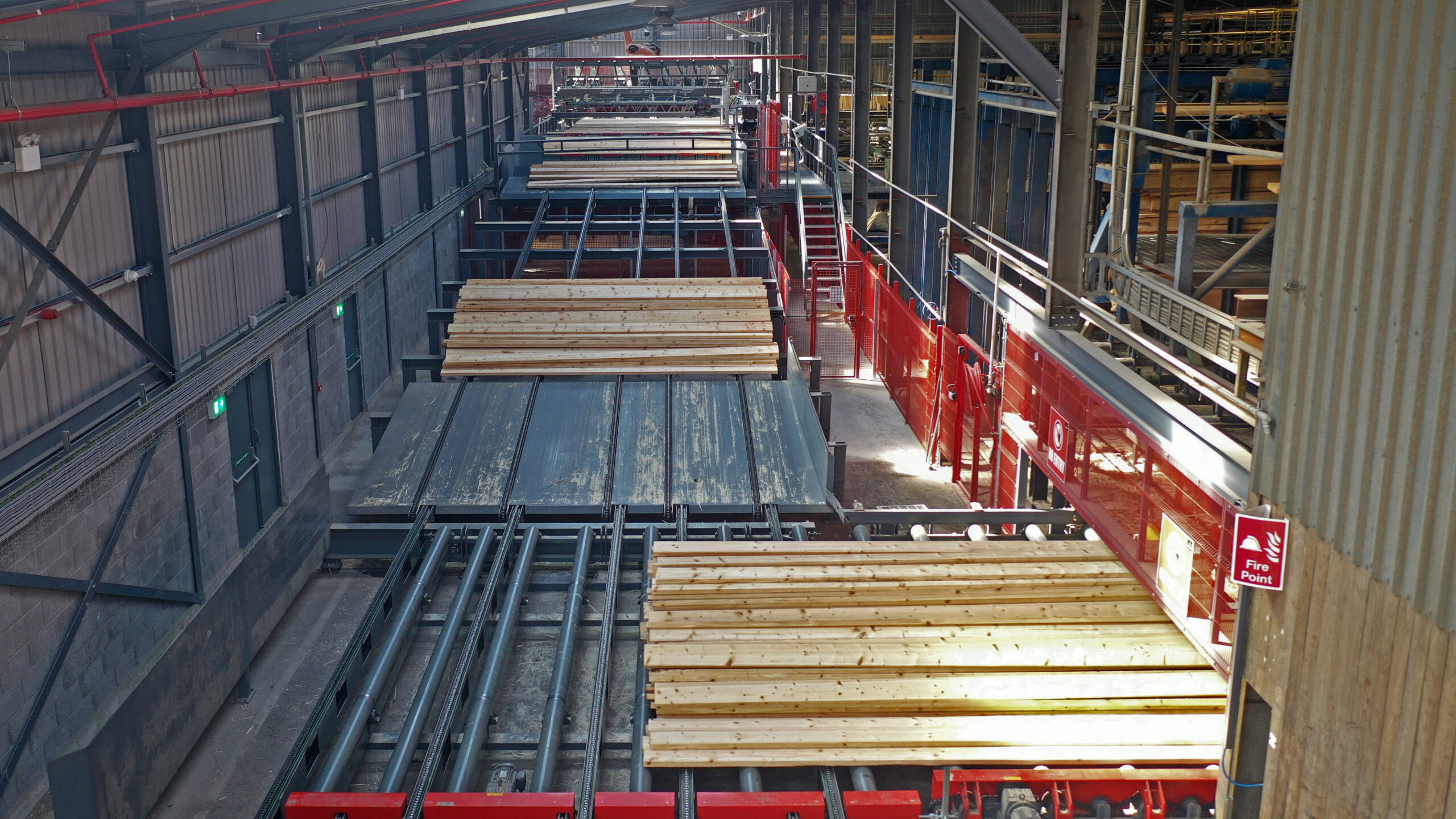Murray Timber Group has installed a Kallfass stacking line to increase automation and boost capacity. Sally Spencer reports
Installing a new stacking line at a busy sawmill in the middle of a pandemic might be a challenge too far for some, but for Murray Timber Group (MTG) and Kallfass it was pretty much business as usual.
The Irish sawmiller, a major processor and exporter of construction, fencing, pallet and packaging timber, had been keen to increase capacity and reduce manual handling at the Ballygar mill and back in May 2019 had placed an order with Kallfass for a stacking line for squared timber for kiln drying and dispatch packages.
The working relationship between MTG and Kallfass stretches back to the installation of a cross-cut and stacking line in 1995. The quality and technical ability of that line had impressed, said Matthias Link, Kallfass sales manager and the companies had maintained contact since then. So when the time came for an upgrade, Kallfass was the name in the frame and after visiting the company and seeing some examples of similar installations in Germany and Austria, the deal – worth around €2m – was struck.
At that point, of course, no one had even heard of Covid-19, let alone knew the impact it would have, but MTG was determined to press ahead and installation started in June last year. Prior to the work starting, the existing building was extended and a new concrete floor was poured, but the mill continued to operate as normal and there were no shutdowns during the installation.
“MTG wanted to have the machinery installed and they did everything to realise that. The pandemic didn’t hinder the early stages of the installation."
Matthias Link, Kallfass sales manager
The Kallfass operatives on site included one mechanic (sometimes two), two electricians and, at the end of the year, one programmer – but Matthias stresses that they “had very good support” from the MTG team. “It was very good to work together with them,” he said, adding that the company was always in step with Kallfass’s schedule and always ready for the next stage of the installation.
However, at the end of the year it became more and more difficult for Kallfass to travel to Ireland and a lot of improvements had to be made via remote service. “MTG had installed cameras at different points of the installation so it was possible for us to see what was happening, recommend adjustments and then to look back to see if they had helped,” said Matthias. It also helped that the MTG team is very skilled technically and was able to describe issues and relay information very precisely.”
The cross-cutting and stacking line can be charged in two different ways. One entry point is from the existing sorter, where the material is taken in batches via an angle transfer and transported to the new line. The complete content of a sorting box (the maximum wood length is 5.3m) is emptied in a batch onto a cross conveyor and transported to the new part of the line. The other entry point takes material from the kiln or from other packages and is de-stacked, cut to length, stacked again and strapped.
If the material is fed via the tilt destacker, the packages (maximum size 1240mm wide x 1500mm high x 5300mm long) are destacked and the sticks removed from the wooden boards and then ejected into a deposit box via a belt conveyor. The boards are transported in layers via an angular chain conveyor to a step feeder. An unscrambler separates the material which is then aligned on a common zero line. Now the operator visually assesses the timber and if end trimming is necessary, pulls the board for subsequent trimming of flaws and wanes.
The boards are now fed layer by layer to the multiple cross-cutting saw, which is equipped with five variably positioned, pneumatically controlled chop saws. Two of the saw units can be pivoted by 30°. The indirect drive allows boards to be sawn to a minimum length of 750 +/- 1mm. A maximum of 10 layers per minute are stacked into packs. The packs are either taken from the front with the forklift, or transported to the strapping machine.
“If the material is going on into the kilns it doesn’t need to be strapped, but packs ready for dispatch will be strapped,” explained Matthias.
“The big decision maker was the robot sticking machine, which was the solution we had been searching a long time to find.”
Spokesperson Murray Timber Group

The robot sticking machine in action
One of the main attractions of the new stacking line for MTG was Kallfass’s patented automatic stick feeding system with a performance of 80 sticks a minute. This is the first installation of its type in the UK and Ireland. The stick bundles are placed with the forklift between the guide walls of the buffer conveyor and are then transported to the unscrambler. The separated sticks pass a scanner and damaged sticks are ejected. The sticks then move to the stick bundling part of the process where they are grouped into packs of 12. These are fed to buffer conveyors and, following alignment, Kallfass’s patented robot grabs the bundles and feeds them into eight double magazines equipped with two shafts each. The double magazines are needed to handle two different stick sizes.
The automatic stick feeder is used for the sticks measuring 44x22mm that are used in the kilns. The smaller sticks (44x10mm and 35x10mm) used for timber packs ready to be dispatched are placed manually in a designated buffer conveyor from where the robot picks up the sticks and feeds the second shaft of the stick magazines.
The strapping is equipped with two bearer magazines. The bearers are strapped together with the pack. A strapping cycle, including pack positioning, takes no longer than 18 seconds. The packs are taken off the subsequent angular transfer with a forklift.
Matthias estimates that the line is running at around 90% capacity and says that as soon as Covid restrictions ease and international travel is allowed, Kallfass will return to the Ballygar mill to carry out some final fine-tuning.
MTG says it is very familiar with the Kallfass equipment and is very comfortable with it from a quality, design and performance point of view.
“The big decision maker was the robot sticking machine, which was the solution we had been searching a long time to find,” said a spokesperson. "It was perfect for what we wanted, fully automated, high performance and completely flexible as to where the sticks can be placed,” he continued. “We are very proud to have one.”

The stick sorter line - the robot can be seen in the background
